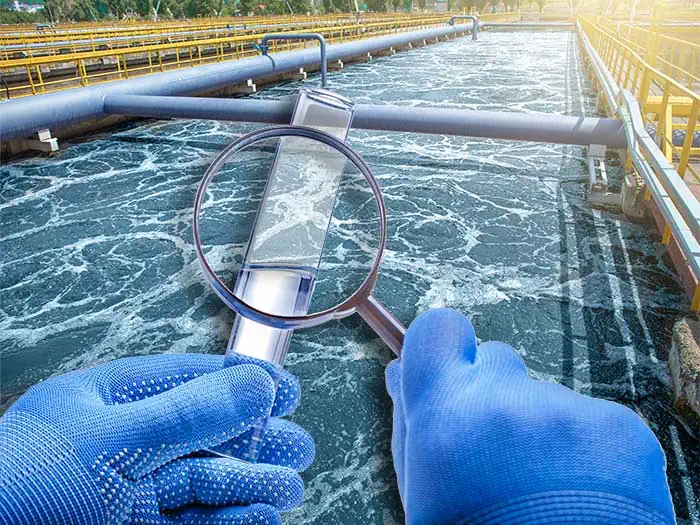M270 PFAS Treatment for Eco-Friendly Waste Management
Cutting-edge PFAS Treatment Solutions for Safer Water
The raising frequency of PFAS contamination in water products necessitates a crucial exam of cutting-edge therapy services. Advanced filtration modern technologies and novel chemical therapies existing encouraging avenues for decreasing these consistent toxins. In addition, arising bioremediation strategies offer a more sustainable strategy to taking on PFAS challenges. As regulative structures proceed to adapt, understanding the effectiveness and scalability of these services ends up being vital. What effects do these advancements hold for public health and wellness and environmental restoration, and how can stakeholders properly implement them in diverse contexts?
Introduction of PFAS Contamination
PFAS contamination has emerged as a significant ecological and public health and wellness worry. Per- and polyfluoroalkyl compounds (PFAS) are a group of artificial chemicals understood for their persistence in the atmosphere and body, leading them to be frequently described as "permanently chemicals." These substances have been widely used in numerous industries, including firefighting foams, water-repellent materials, and food product packaging, primarily due to their water- and grease-resistant residential properties.
The prevalent use PFAS has actually resulted in their discovery in soil, water products, and also in the blood of human beings and animals. Researches have connected PFAS direct exposure to numerous health issues, including developmental effects in infants, immune system dysfunction, and different forms of cancer. In addition, the environmental persistence of these compounds complicates their deterioration and removal, increasing issues concerning long-lasting environmental effects.
Regulative bodies are progressively carrying out strict guidelines to keep an eye on and minimize PFAS degrees in drinking water and other ecological mediums. As recognition of PFAS contamination grows, it has come to be crucial for neighborhoods and sectors to look for reliable treatment solutions to mitigate direct exposure and guard public health and wellness.
Advanced Purification Technologies
As the urgency to resolve PFAS contamination intensifies, progressed purification modern technologies have actually become a crucial element in the remediation efforts intended at getting rid of these consistent chemicals from water resources. These technologies leverage sophisticated mechanisms to effectively target and capture PFAS compounds, which are notoriously resistant to standard treatment techniques.
One of the most promising approaches is making use of granular turned on carbon (GAC), which adsorbs PFAS molecules because of its high area and permeable structure. This method has been extensively applied in both municipal and industrial setups, showing considerable reductions in PFAS focus. Additionally, ion exchange resins have actually obtained grip, particularly developed to precisely bind PFAS ions from water, therefore facilitating their elimination.
Membrane layer filtration innovations, such as reverse osmosis and nanofiltration, additionally show efficacy in PFAS removal by literally separating contaminants from water - pfas management. These systems can achieve high degrees of pureness, making them suitable for alcohol consumption water applications
Chemical Therapy Innovations
Numerous chemical therapy technologies are being discovered to successfully address PFAS contamination in water products. One appealing approach entails using sophisticated oxidation processes (AOPs), which use effective oxidants such as ozone, hydrogen peroxide, or chlorine dioxide incorporated with UV light to damage down PFAS substances right into much less damaging materials. This technique has actually shown effectiveness in lab setups, revealing possible for scalability in real-world applications.
One more ingenious method is the growth of ion-exchange materials particularly designed to target PFAS. These resins can uniquely adsorb PFAS substances from water, permitting their removal throughout therapy processes. Recent developments have boosted the efficiency and capability of these materials, making them a favorable option for water treatment facilities.
In addition, researchers are checking out using chemical agents like persulfate and ferrous ions to enhance the deterioration of PFAS in polluted water. These agents can generate chemical reactions that promote the failure of relentless PFAS substances.
Arising Bioremediation Strategies
Recent advancements in chemical treatment advancements have actually led the way for discovering bioremediation methods as a feasible option for addressing PFAS contamination. Bioremediation harnesses the natural metabolic procedures of bacteria to break down or transform toxins, making it an attractive approach for tackling relentless impurities like PFAS.
Emerging methods in bioremediation consist of using genetically engineered microorganisms that can particularly target and damage down PFAS substances. These microbial my website stress are being developed for their improved degradation capabilities, boosting the performance of the remediation process. Furthermore, researchers are checking out the potential of plant-assisted bioremediation, where particular plant species might uptake and sequester PFAS from infected dirt and water.
One more appealing approach is check my source the application of bioaugmentation, which includes presenting useful bacteria into contaminated environments to improve the destruction of PFAS. This method can assist in faster remediation timelines and improve overall efficiency.

Governing Frameworks and Requirements
A detailed regulatory structure is vital for effectively taking care of PFAS contamination and ensuring public wellness security. The boosting recognition of per- and polyfluoroalkyl compounds (PFAS) as toxic wastes has actually triggered various federal and state companies to establish requirements that control their existence in water materials. The U.S. Environmental Security Agency (EPA) has actually developed wellness advisories and is functioning toward establishing enforceable limitations for PFAS in drinking water.
State-level laws vary dramatically, with some states embracing more stringent guidelines than those recommended by the EPA. These guidelines often consist of optimum impurity levels (MCLs) for specific PFAS compounds, tracking requirements, and reporting responsibilities for water utilities. Furthermore, arising structures concentrate on the remediation of infected sites, stressing the need for efficient therapy innovations.

Verdict
To conclude, the advancement and execution of try this ingenious PFAS therapy services are crucial for addressing the prevalent problem of water contamination. Advanced filtering modern technologies, chemical therapies, and emerging bioremediation strategies jointly present a diverse strategy to properly decrease and weaken PFAS degrees. As governing frameworks proceed to advance, incorporating these technologies will be necessary to protect public wellness and recover the stability of infected water resources, inevitably adding to a cleaner and safer environment.